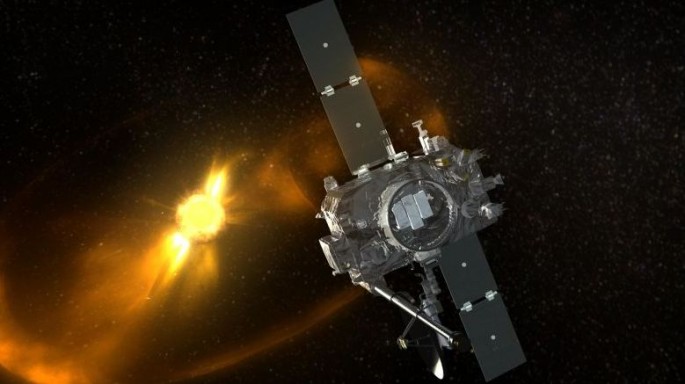After almost two years of silence, the missing STEREO-B satellite called home to NASA saying it was still "alive" and apparently still able to do its job of providing the first-ever stereoscopic measurements to study the Sun and space weather, including coronal mass ejections or CMEs.
NASA said it had reestablished contact with the 640 kg sun-watching STEREO-B spacecraft on Aug. 21 after communications were lost in October 1, 2014. STEREO-B is one of two spacecraft of the Solar Terrestrial Relations Observatory (STEREO) mission, which over the course of their lifetime have viewed the sun from vantage points such as the ones shown here, on the other side of the sun from Earth. The other spacecraft, STEREO-A, continues to operate normally.
Over 22 months, the STEREO team worked to attempt contact with the missing spacecraft. Most recently, they attempted a monthly recovery operation using NASA's Deep Space Network (DSN), which tracks and communicates with missions throughout space.
The DSN succeeded in establishing a lock on the STEREO-B downlink carrier. The downlink signal was monitored by the Mission Operations team over several hours to characterize the attitude of the spacecraft and then transmitter high voltage was powered down to save battery power.
The STEREO Missions Operations team plans further recovery processes to assess observatory health, re-establish attitude control, and evaluate all subsystems and instruments.
Communications with STEREO-B were lost during a test of the spacecraft's command loss timer, a hard reset triggered after the spacecraft goes without communications from Earth for 72 hours.
The STEREO team was testing this function in preparation for something known as solar conjunction, when STEREO-B's line of sight to Earth -- and therefore all communication -- was blocked by the sun.
The two nearly identical spacecraft were launched in 2006 into highly elliptical geocentric orbits around the Sun that cause them to respectively pull farther ahead of and fall gradually behind the Earth. This enables stereoscopic imaging of the Sun and solar phenomena.
The principal benefit of the STEREO mission is stereoscopic images of the Sun. This means that because the satellites are at different points along the Earth's orbit, but distant from the Earth, they can photograph parts of the Sun not visible from the Earth.
This allows NASA scientists to directly monitor the far side of the Sun, instead of inferring the activity on the far side from data that can be gleaned from Earth's view of the Sun. The STEREO satellites principally monitor the far side for CMEs or solar flares.



























